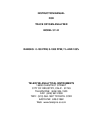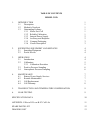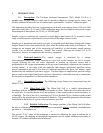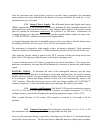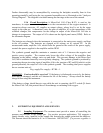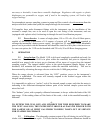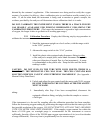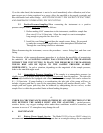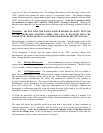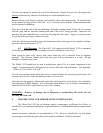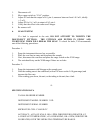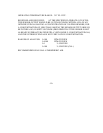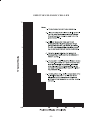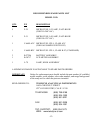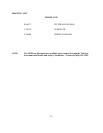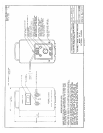
every two (2) days of continuous use. To recharge the batteries, place the range switch in the
“OFF” position and connect the power cord to a convenience outlet. The integral charging
circuit will automatically energize and regulate battery charging current when the switch is in the
“OFF” position and the AC cord is plugged into the power line. Under no circumstances allow
the instrument to remain “ON” when the “LOW BATT” warning is indicated. Charging the
batteries more than this will not
damage them; allowing them to discharge completely may do
so.
WARNING
: DO NOT TURN THE RANGE SWITCH EITHER TO “BATT. TEST” OR
TO THE OPERATING POSITION WHILE THE UNIT IS PLUGGED INTO THE
POWER LINE! DOING SO MAY CAUSE THE INTEGRATED CIRCUITS TO FAIL.
When charging is completed, unplug the unit from the AC outlet. Turn the range switch to the
“BATT. TEST” position or to the operating position. NOTE: The “BATT. TEST” position will
not give a reliable indication of the battery charge immediately after a charge cycle. Allow the
unit to run for awhile before testing the batteries.
If the instrument is stored with the range switch in the “OFF” position (charge cord
disconnected), the period of time between charge periods should be one month. However, do not
leave it longer than the one-month period.
4.2 Routine Maintenance
: Beyond adhering to a battery recharge schedule, no
routine maintenance is required, as there are no moving parts in the instrument. The Micro-Fuel
Cell is a sealed, modular component that should be replaced when faulty.
4.3 Cell Replacement
: The characteristics of the Micro-Fuel Cell are similar to
those of a mercury battery, in that both provide an almost constant output through their useful
life, and then fall off sharply towards zero at the end. If the sample being analyzed has a low (0-
100 ppm) oxygen concentration, cell failure will probably be indicated by the inability to
properly calibrate the analyzer. The user will find that very little adjustment of the 10-turn span
potentiometer will be required to keep the analyzer calibrated properly during the duration of a
given cell’s useful life. If large, many-turn adjustments (cw) are required to calibrate the
instrument, or calibration cannot be achieved within the range of the control, the cell should be
immediately replaced. (Read Section 4.4 before replacing the cell.)
-7-
To offset the possibility of not having a replacement cell available when it is needed, TAI
recommends that a spare cell be purchased shortly after the instrument is placed in service, and
each time the cell is replaced thereafter.
The spare cell should be carefully stored in an area that is not subject to large variations in
ambient temperature (75° F, nominal), and in such a way as to obviate any possibility of
incurring damage. Under no circumstances, disturb the integrity of the cell package until the
cell is to be actually used. If the cell package is punctured and air permitted to enter, the cell
will immediately start to react to the presence of oxygen.



